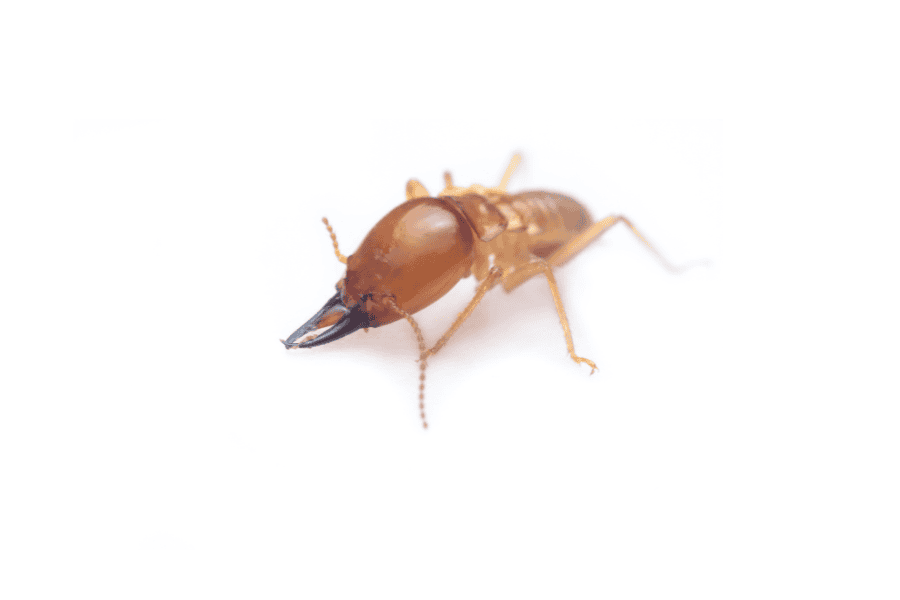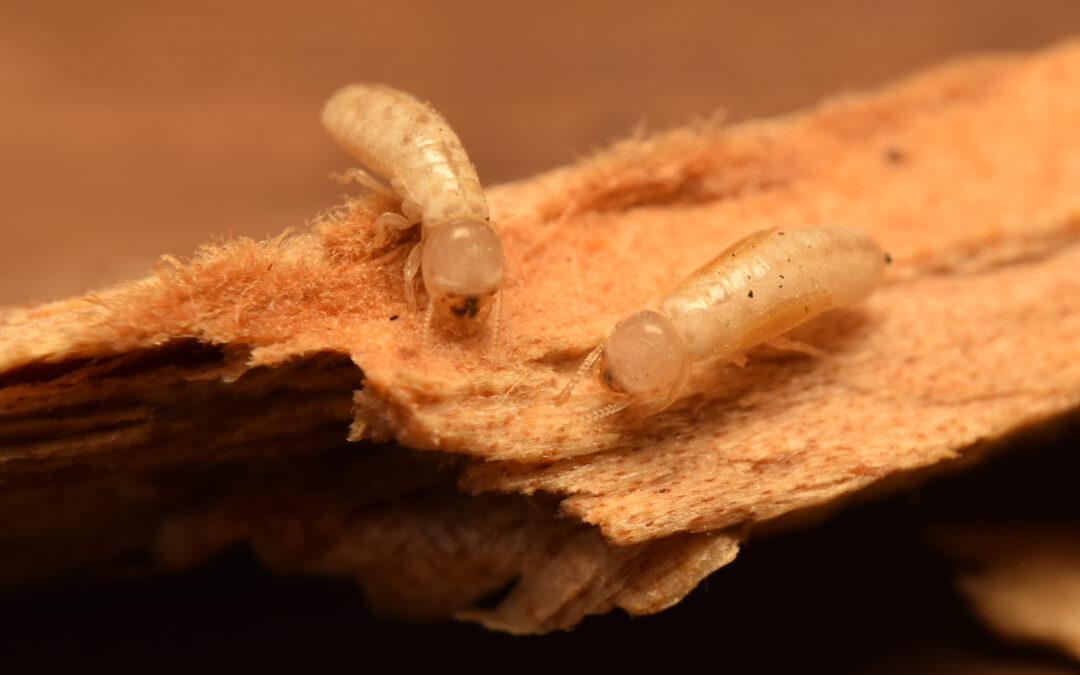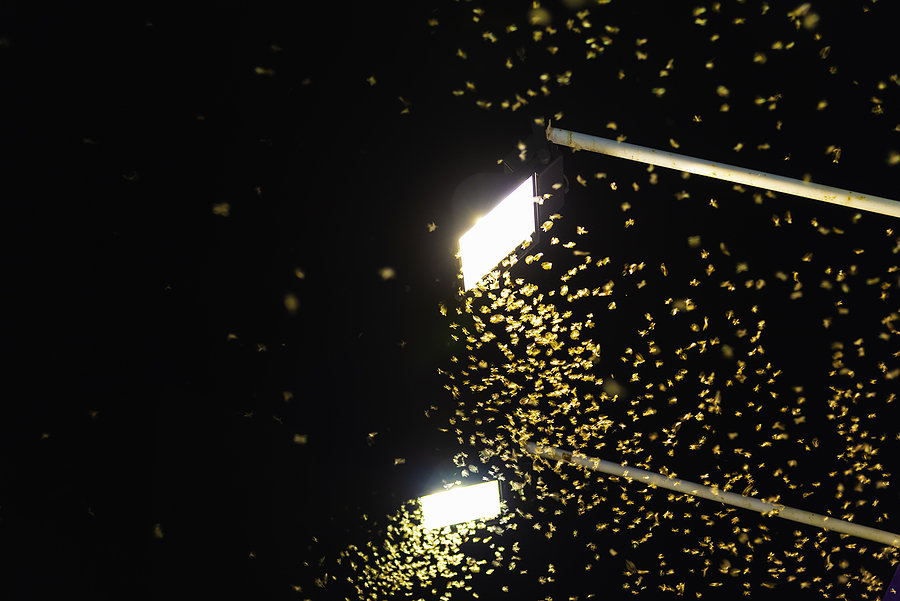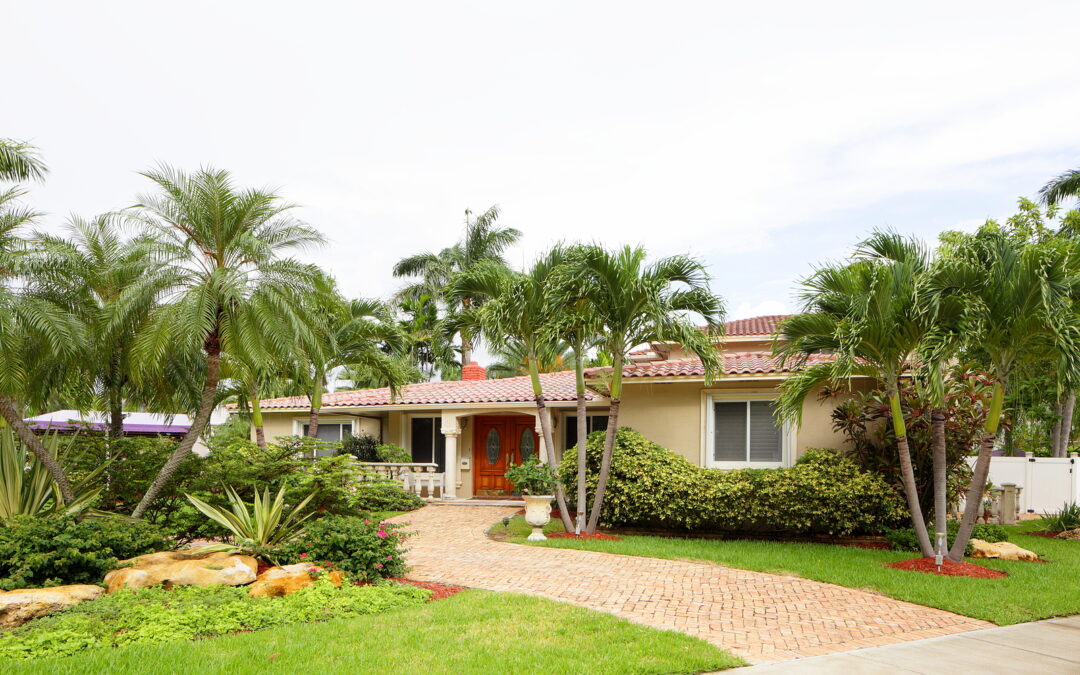READY TO GET STARTED?
REQUEST A FREE ESTIMATE
Fill out the form below or call (888) 466-7849 for a free, no-obligation estimate.

Drywood termites might seem like their counterpart, the subterranean termite, but they couldn’t be more different. Instead of surviving off moisture like subterranean termites, drywood termites seek dry wood for their food source. Once these termites find a place to create their colony, they will excavate the wood and cause significant structural damage to many Florida homes. One of the best ways you can avoid drywood termite damage is understanding their signs and the preventative measures to place on your property!
Drywood termites build their colonies inside wood in and around your home, surviving above the ground. While termites are difficult to spot, there are signs to indicate their activity in your home, including:
In Florida, drywood termite activity is year-round, so it’s crucial to stay on top of your termite prevention. Consider the following tips to avoid a drywood termite infestation:
If you notice drywood termite signs or suspect there are termites inside your Florida home, it’s best to contact a local pest control company near you. These professionals can schedule you with a routine termite inspection and termite control options.

Drywood termites are quite common in the South Florida area, thriving off our year-round dry and humid temperatures. This termite type can be difficult to spot in homes and will often go undetected for lengthy periods, causing considerable structural damage. The best way to avoid the costly damage of drywood termites is to understand their characteristics and the preventative measures you can place to deter them away from your property. Let’s learn more about these household pests and drywood termite control tips to protect your home.
Unlike the subterranean termite, drywood termites do not need to live in soil to survive. These termites will instead excavate wood to create a colony and live. Drywood termites will seek out dry wood, hence their name, to build a nest and live in it, such as attic framings. Drywood termites have an oval-shaped waist, short legs, and a cream to light brown colored body.
Often, drywood termites get into your Florida home by hitchhiking through an already infested piece of old furniture, picture frame, or other wooden structure. While they don’t create mud tubes like the subterranean termite to enter the home, they instead fly directly to the wood they infest. They’ll also enter homes through open gaps or cracks around window frames, doors, soffits, and attics.
Since termites live in excavated wood, it can be hard to identify them but there are plenty of signs you can lookout for. A good indication that termites have created a colony in your home is spotting discarded wings near windowsills or doors and finding droppings or frass that look like small mounds of tiny pellets inside or around your home.
There are several preventative do-it-yourself methods you can use throughout your Florida property; consider these:
If you’ve noticed signs of termite activity on your property or would like to get started on drywood termite control, reach out to your Florida pest control company! Termite professionals will provide you with a free home inspection, a treatment plan based on your termite control needs, and a prevention plan to avoid a future infestation.

Swarming termites, or alates, are often seen in the spring and summer months. While they might seem alarming, these pests do not bite, sting, or chew wood. Instead, swarming termites indicate they an established termite colony is close by, which can be problematic for your home and family. But when does swarming season begin and how do you know if termites have invaded your Florida property? We breakdown what you should know about termite swarms.
Swarming season often depends on the type of termite; however, in Florida we have two common termites to lookout for: subterranean and drywood termites. Subterranean termites swarm during the spring and early summer months. Drywood termites tend to swarm in the late spring to end the summer. Termite swarms are also determined by weather, with rainstorms and overcast increasing swarm activity.
Termites swarm to both reproduce and expand their colony. Once a colony has reached its capacity of termites, the swarming process begins, leaving their existing one to start a new. The number of termites that will swarm will often depend on the type of termite species and colony size.
Preventing swarming termites starts with preventing termite colonies from establishing. There are several preventative measures you can place at your home to avoid termite swarms and keep termites from establishing, including:
If you suspect swarming termite activity nearby or a termite infestation at your home, it’s best to call your local pest control company for help. Termite professionals will give you a thorough evaluation and the best termite treatment and prevention plan.

Dealing with a drywood termite infestation is less than ideal since these pests can cause significant structural damage to your Florida home. So how can you prevent termites from invading? It’s important to understand the characteristics of drywood termites, signs of their activity, and the preventative measures to place throughout your home, we break down all these below.
Drywood termites have an oval-shaped waist, short legs, and a cream-white to light brown colored body. The size of these termites depends on their age, but usually range from ¼ inch to 1 inch long. Unlike their counterpart, the subterranean termite, drywood termites do not need soil to live. Instead, they excavate wood, living and nesting within wooden structures or dry wood, such as attic framings.
Since these termites live in the excavated wood, it can be difficult to spot and identify them. However, there are still termite signs you can look out for. Swarms of termites or discarded wings near windowsills or doors is an early indication that a colony has been established at your home. Likewise, spotting their droppings, or frass, is a telltale sign of a termite infestation. These droppings look like small mounds of tiny pellets.
Consider implementing these do-it-yourself termite control measures throughout your property to avoid a termite infestation:
If you’ve noticed drywood termites on your property or would like to get ahead of your termite prevention, contact your local Florida termite control company for more information. These professionals will provide you with a free inspection, a treatment plan based on your home’s needs, and recommendations on preventing termites in the future.

Once termites have infested your Florida home, it’s hard to stop their damage. Both drywood and subterranean termites can wreak havoc, often going undetected for long periods of time, with repairs costing thousands of dollars. The best way to avoid termite damage is investing in termite control. Check out some termite control options for your Oakland Park home.
Bait stations, including the Sentricon Always Active Station, are installed by a pest professional and placed at the perimeter of your home to eliminate subterranean termites. The bait stations provide termites with a food source, which contains a slow-acting termiticide treatment that termites will take back to their colony, eventually eliminating it. A bait station is great to utilize where surface treatments cannot be used, including near foundation drains and areas covered by slabs or flooring. This option is a long-termite preventative solution to avoid termite infestations.
Liquid termite treatments are a great way to combat subterranean termites and their colonies. This treatment option is a great way to prevent termites from invading your home. The treatment requires a pest control company to dig a trench around the perimeter of your foundation. Once the trench is dug, a termiticide is injected in the proper intervals. The treatment utilized isn’t instant to give enough time for termites to bring it back to the queen and ultimately eliminate the entire colony at hand.
The no-tent termite treatment option is best used when drywood termites have infested your home. This option is a great alternative to tent fumigation when you’re not able to vacate the home for treatment. A no-tent termite solution utilizes a non-repellent product into drywood termite galleries to eliminate the termites found in your home. The treatment is slow acting to allow the termites who have come in contact with the product to take it back to the queen and colony to eliminate it.
Dealing with a termite infestation is less than ideal so it’s important to understand preventative measures that you can keep in mind and place throughout your home to avoid their infestation.